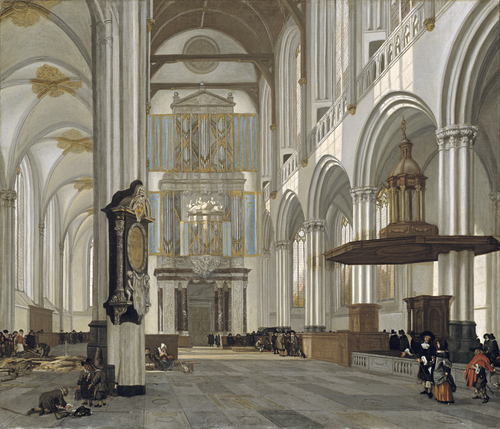Provenance
Horace-Jean-Louis Turrettini, Geneva, ca. 1760 [1]; Sophie (Turrettini) Perrot and Adolphe Perrot, Geneva [2]; By descent to Mme Louis Perrot de Montmollin “From the estate of Mme Louis Perrot de Montmollin of Geneva (sold by the heirs),” Christie’s, London, lot 71 (£ 19,000; $47,900, to “Clive”), June 27, 1969 [3]; Edward Speelman, London, June 27, 1969–December 4, 1969 [4]; Acquired by the Putnam Foundation, 1970 [5]
Provenance Notes:
[1] Christie’s catalogue, Montmollin sale, June 27, 1969, names “Horace Jean Louis Turre[t]tini, Geneva.” It appears there are two individuals with this name, one b . 1744, the other b. 1746. The French version “Turrentine,” which has been used in Timken Museum publications, does not appear in listings of historic Geneva family names.
[2] Per Christie’s catalogue, Montmollin sale, June 27, 1969.
[3] Price list, Christie’s letterhead, inserted into auction catalog, Getty Research Institute. Hand annotations again list the price and buyer (“Clive”), and also name the “Timken Gallery, San Diego.” Price listed as £19,950 in communication from Christie’s, May 11, 2005 [in object file]. The discrepancy probably represents the amount of the sales commission.
[4] From typed notes dated 4/23/02 in the Timken files. Presumably “Clive” was an agent for Edward Speelman; Christie’s have no record of Clive’s identity (per correspondence with Marijke Booth, Christie’s, April 2005).
[5] Acquired from Speelman, December 4, 1969. There has been some confusion regardingthe date. Timken Museum publications list the date as “Acquired by the Putnam Foundation, 1970,” despite the note above. The piece also carries a 1969 accession number, 1969:003.
Some progress has been made in identifying the two Geneva families (Turrettini and Perrot) with which the painting is connected. Also, the Montmollin name comes from the Neuchatel region, where there is also a town by that name. All of these facts contribute to support the apparent validity of continuous Swiss provenance.
A claim regarding this painting, and a number of others in the Timken collection, was presented in 2004 by an attorney representing members of the Oppenheimer family.
Although the family lost a number of works to Nazi looting, none of the Oppenheimer paintings, which were sold in early 1935 in a Nazi-sanctioned auction, correspond to pieces owned by the Timken.
